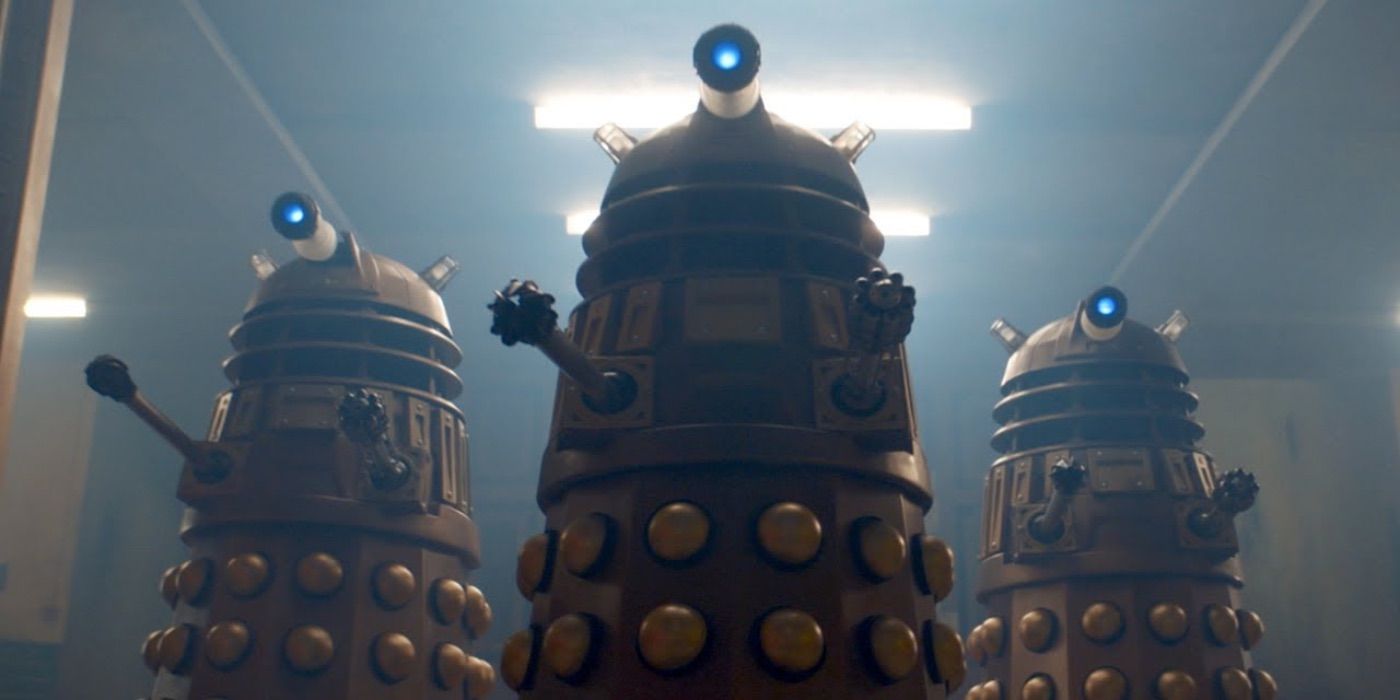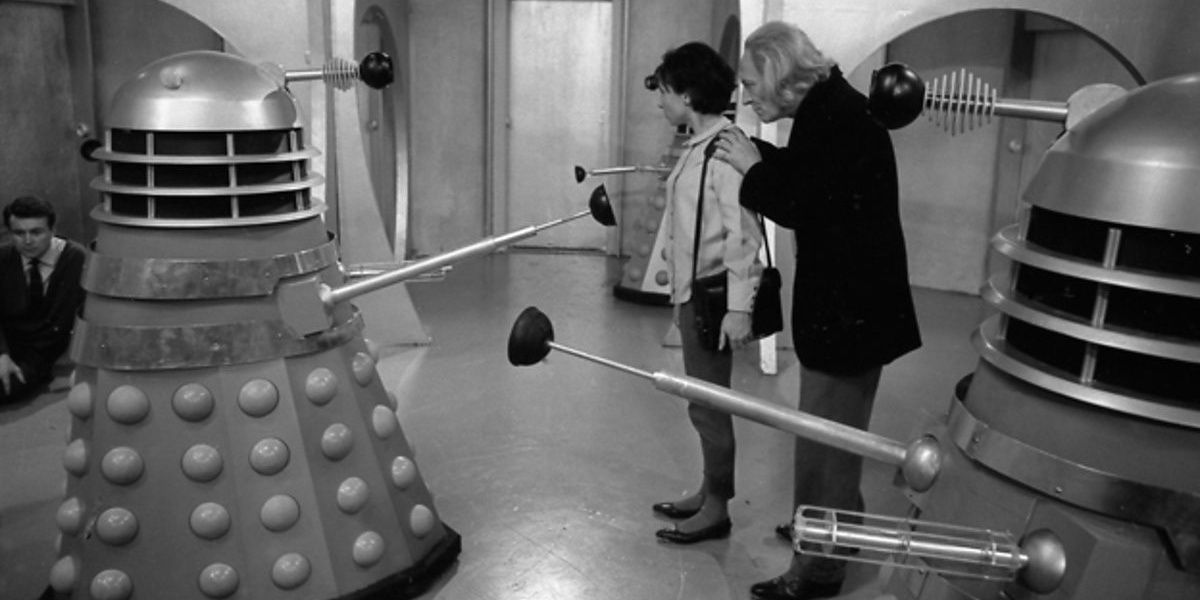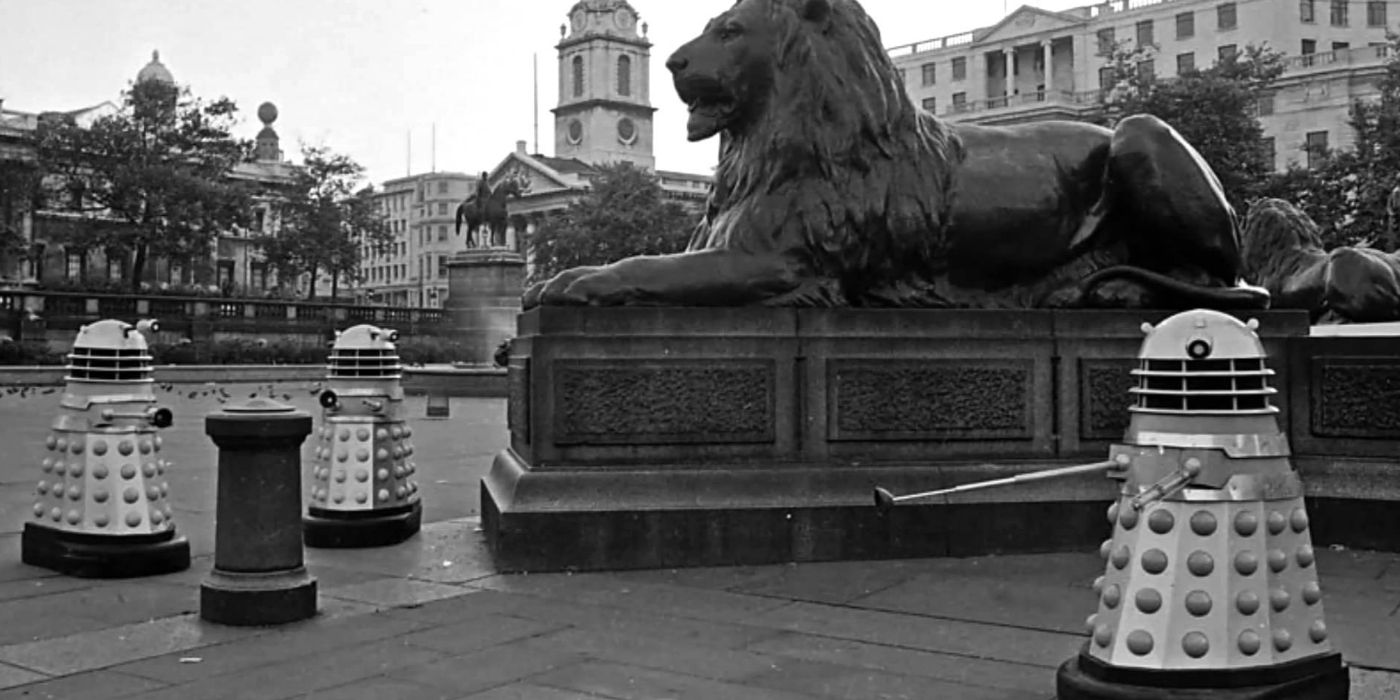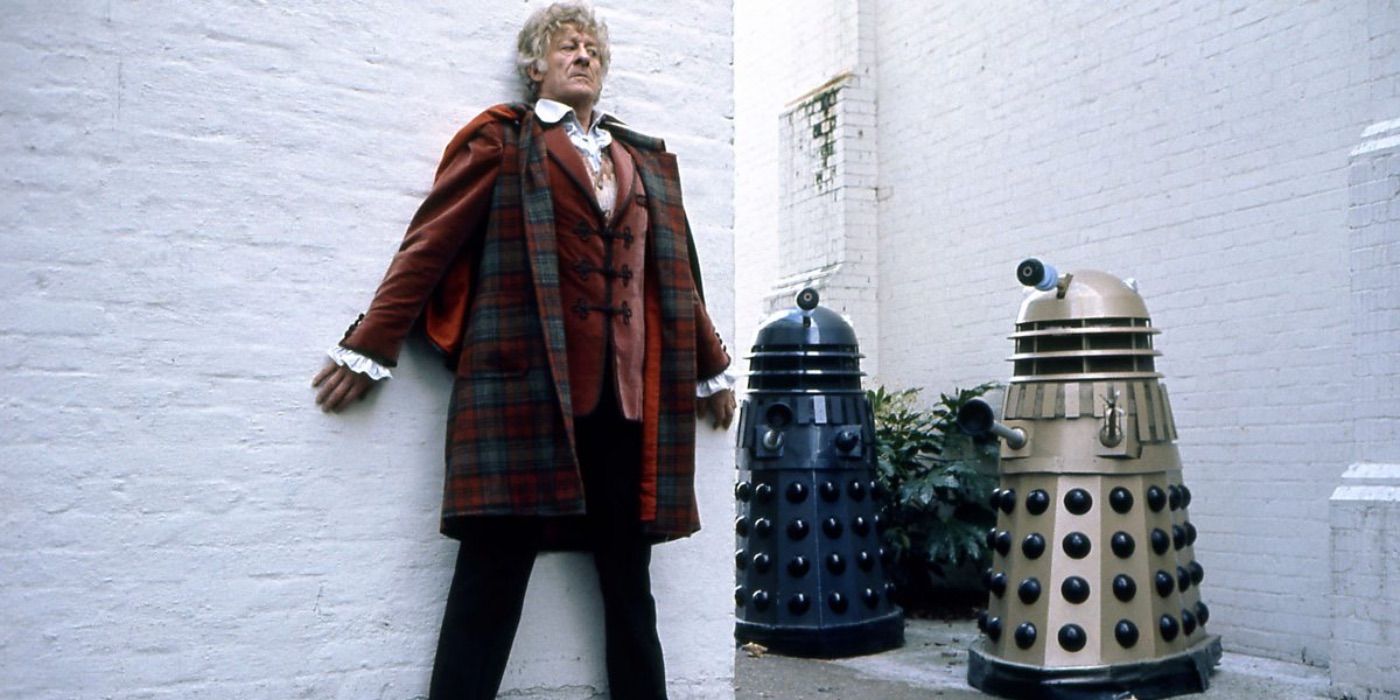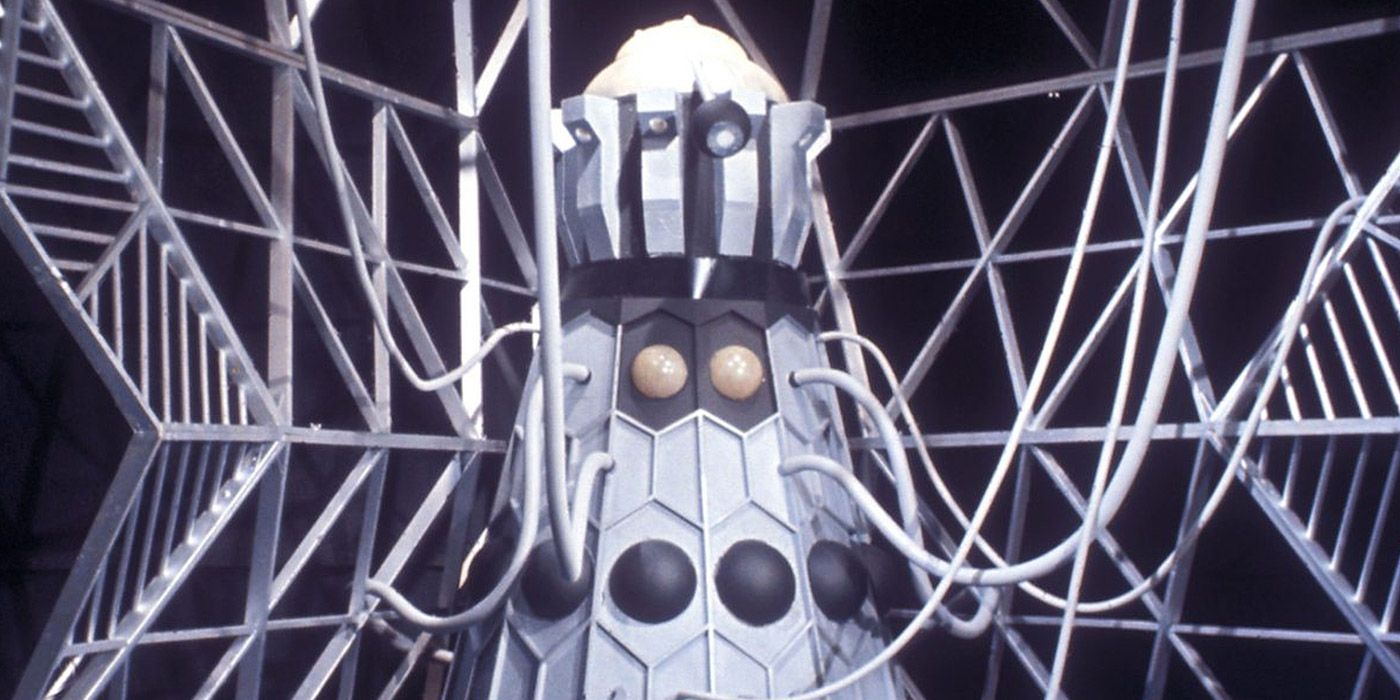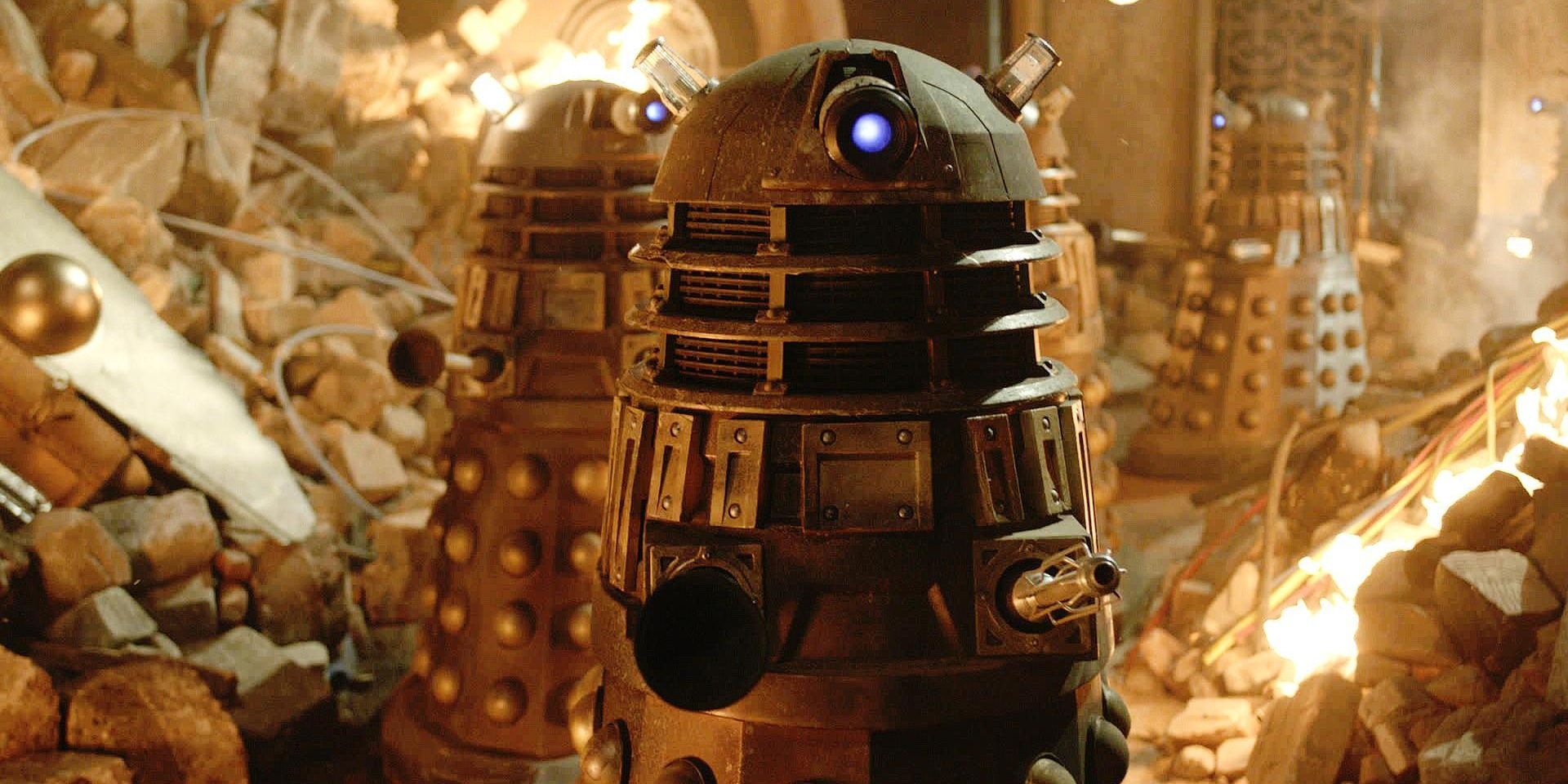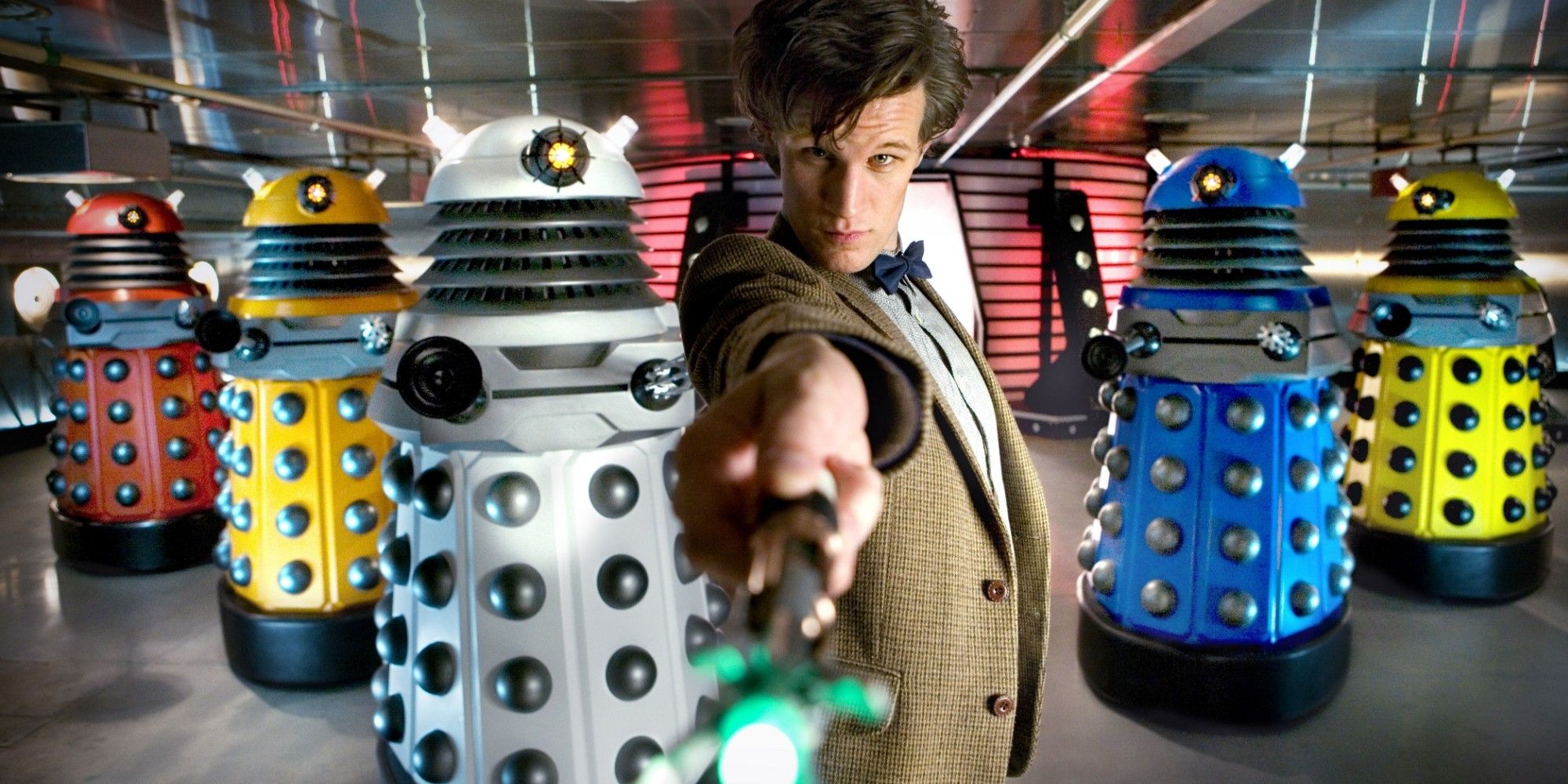The Daleks of Doctor Who have seen a lot of changes since the 1960s, with each new type differentiating them from previous generations. Aside from the aesthetic changes made to their armored bodies, the Daleks have also seen a fair amount of upgrading to the abilities that have made them even more efficient exterminating machines. Their capability to upgrade themselves is what helps make them Doctor Who's most memorable villain, and even after a lengthy hiatus between seasons, the Daleks eventually return to continue to vex the last remaining Time Lord.
Making their first appearance in the 1963 serial The Daleks, the denizens of Skaros have been a part of Doctor Who lore since the very beginning and are still very much a part of that lore today. Many of their early changes were from necessity, but Doctor Who continues to tease new Dalek designs even when the BBC isn't as technically limited as they were during the original run of the show. No matter how many upgrades and design changes the Daleks go through, there will always be a bit of that early '60s charm to their look, and they've transcended Doctor Who to become fixtures of sci-fi pop culture.
Mark 1
Physically, the Daleks of the serial The Daleks aren't that far off from their modern appearances, but their limitations in the story make them almost laughable compared to today's killing machines. They possess their trademark plunger, gunstick, and bulbous eye-stalk, but their base is much larger than in later appearances, and they obviously lack mobility. Their power is generated from static electricity drawn from the metallic floor, and that piece of history from the origin of the Daleks held them back until the second generation ignored that problem. The first Daleks were important because they introduced the legendary characters, but it was clear that change was needed.
Mark 2
In 1964, The Dalek Invasion of Earth introduced fans to a much more recognizable version of the Daleks, and they received a mobility upgrade to allow them to freely roam while filming on location. The second-generation Dalek sports a much larger bumper to hide its wheels, and a small satellite dish that allows the unit to receive power remotely. The rest of the body was mostly unchanged from their first appearance, and the only upgrades were made because the story demanded them. Retconning the static electricity problem may have made Doctor Who's continuity confusing, but it was the smartest way to make the Daleks more formidable villains going forward.
Mark 3
The third generation of Dalek is truly where the galactic exterminators hit their stride, and many of the changes made to the design and power set have stuck to the characters since the original Doctor Who run. Debuting in 1965's The Chase, the Mark 3 Dalek was given a smaller bumper that resembled the Mark 1 design, and the metallic bracing around the midsection was replaced by vertical slats to give them a more clean and cohesive look. First appearing in color in the 1972 serial Day of the Daleks, the Mark 3 unit was shown to be of a drab gray color that smacked of military efficiency.
Throughout the '70s and '80s, the lore of the race was further fleshed out, and though the Dalek's complete timeline will always be fuzzy, many important pieces of continuity were established during that 16-year period. Revelation of the Daleks, from 1985, introduced the Imperial Daleks, a subset of the race created by Davros that was equipped with an off-white paint scheme. Similarly, the imposing Special Weapons Dalek, introduced in 1988's Remembrance of the Daleks, was a tank-like subset equipped with a massive cannon and a squatter dome top. Remembrance of the Daleks also added an important new ability to the Imperial Daleks' arsenal as they were shown to fly.
Dalek Hierarchy
Most of the Daleks in Doctor Who are mere drones and soldiers, but occasionally the show offers a glimpse of the higher-ups of Skaros society through the likes of Emperors and Supremes. Doctor Who has made it clear over the years that Daleks are bad shots, but their physical limitations were exemplified by the first appearance of their emperor in the 1967 serial The Evil of the Daleks. First depicted as an immobile being strapped to dozens of wires and tubes, the Emperor was really only able to dictate. Subsequent redesigns have made the leader more visually interesting, but his limitations continue.
Supreme Daleks are much more mobile and, except for a few aesthetic differences, closely resemble the drones they command. Debuting in 1964's The Dalek Invasion of Earth, the Supreme then known as the Black Dalek only featured a dark paint job to set him apart. Throughout the Mark 3 era of Doctor Who, the show's additional Dalek variants revolutionized the franchise and proved that a constant state of change within their hierarchy kept each appearance fresh and exciting. By the modern Doctor Who era, the Supreme Dalek had a new look including a red body and a jutting metal neck array, as seen in the 2008 episode "The Stolen Earth."
Time War Daleks
Taking place between the events of the original Doctor Who and the revival series, the Time War changed the entire course of the show's universe, and the Daleks didn't miss a chance to get in on the action. Already a war-like race, to begin with, the Time War Daleks shed any pretense of aesthetic and went into battle with a copper-colored body that was reminiscent of the dreary bombers of Earth's many wars. The 2005 episode "Dalek" explained that the race almost succeeded in winning the conflict, and many mysteries about the Time War still abound within the Doctor Who continuity.
New Paradigm Daleks
After the reappearance of the Time War Daleks nearly sent the Doctor into a tizzy in "Dalek," the Doctor Who revival finally got its own Dalek redesign in the form of the New Paradigm. Following their crushing defeat during the Time War, the Daleks set out into the universe to preserve their genetic purity and reformed the empire into the New Paradigm. This restructure was accompanied by new casing designs in the 2010 episode "Victory of the Daleks." The New Paradigm Daleks were much taller and bulkier than their predecessors, and a color-coded system was added to their hierarchy with each class denoted by a specific paint scheme.

